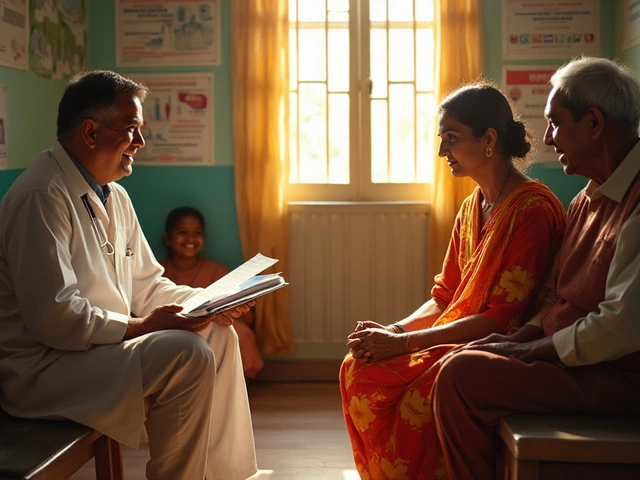Death sneaks up on us quietly, yet it rarely comes as a total surprise. For families, the two weeks before passing can feel like walking on a tightrope. There’s fear, confusion, and a strong need for clarity, but also an urge to simply hold on—one more day, one more moment. What actually happens in those final two weeks? How do bodies and minds change as time draws short, and what can loved ones really expect when the end draws close?
The Body's Final Countdown: Recognizable Signs and Physical Changes
The body, ever practical, starts to send out clear signals in those final two weeks. Energy declines sharply. A person who was chatting and eating last month now might struggle to get out of bed. One of the most obvious red flags is that they’ll spend more and more time sleeping; some people are drowsy almost nonstop. This isn’t laziness—it’s the body’s way of winding down, saving the last reserves for the basics: breathing, pumping blood, and keeping pain at bay.
The appetite shrinks. Even favorites—my daughter Anaya’s grandmother wouldn’t touch her beloved mangoes—hold no appeal. Food loses meaning, and the body can’t process much anyway. Sips of water become rare, and dehydration follows. Dry lips and sunken eyes are unmistakable, as are cool hands and feet as circulation slows. Sometimes, the skin develops purple or blue blotches, called mottling. It’s not pretty, but it’s a clear message that the heart isn’t pumping as strongly as before.
Another sign is changes in breathing. You might hear deep, irregular breaths, with long pauses or a rattling sound—sometimes called the “death rattle.” It’s not painful, but it’s hard for family to witness. Cheyne-Stokes breathing, which involves cycles of rapid breaths followed by slow ones and then a pause, is extremely common and signals that time is running out. Muscles weaken so much that it’s tough to swallow. Speech fades to whispers or disappears entirely. For many, confusion and restlessness creep in. They might pick at blankets, fidget, or talk about traveling or “going home.” For some, hallucinations kick in, seeing people and places no one else witnesses; oddly, these are often peaceful or reassuring.
Here’s a simple table to map some of the most typical physical changes:
| Sign | When to Expect | What it Means |
|---|---|---|
| Heavy sleepiness | 1-2 weeks prior | Energy conservation, approaching death |
| No appetite/thirst | 10-14 days prior | Body can't process food |
| Mottled skin (blue-purple patches) | 5-10 days prior | Slowed circulation |
| Death rattle breathing | Last week | Fluid buildup, weakened reflexes |
| Hallucinations | 1-2 weeks prior | Brain chemistry changes |
Be prepared for these signs, but don’t get hung up on exact timing—each timeline plays out a little differently.

Emotional and Mental Changes: What Goes On Inside
While the body shows its cards, the mind is also on its own journey. Many people get deeply reflective. Old memories bubble up, sometimes surprisingly vivid—long-ago childhood scenes, lost loves, moments parents rarely shared before. It’s normal for people to swing between being lucid and present, and then suddenly distant or not making sense. They might talk about needing to “finish business” or see someone who’s already passed away. It’s strange, but not uncommon for dying people to want “permission” to go—sometimes what’s holding them here is their loved ones’ worry or grief.
It’s also a season for fear. The unknown is scary, and anxiety is a daily visitor. Some have regrets or unspoken things they want to say, but finding the words can be tough. Patience and comfort are priceless here. Short, simple conversations matter more than perfectly crafted speeches. I’ve seen relatives just sit and hold hands in silence—sometimes that’s all a person needs to know they’re not alone.
Many people shift from caring about everyday worries—bills, jobs, the news—to wanting reassurance that their loved ones will cope. Children, like my Anaya, sense this deeply, so honesty and hugs are more important than grand explanations. Remind dying loved ones that they matter, and it’s okay for them to rest. If possible, involve them in small decisions: playing favorite music, opening a window to let in a breeze, or sharing old photos together.
Hospice teams, where available, are wizards at helping with these emotional curves. In many studies, families who worked with hospice reported far less guilt, anxiety, and emotional trauma in the months after losing someone. One recent US survey in 2023 found that over 80% of hospice families felt more prepared and able to focus on “goodbyes” rather than medical chaos during those last days.
If spiritual or religious rituals matter, now’s the time to honor them. For some, this means a priest, monk, or rabbi at the bedside. For others, it’s candles, prayers, or just quiet music. You don’t have to be an expert—just present.

Practical Tips for Comfort: What Families Can Do in the Final Days
Watching a loved one fade away is brutal, but you aren’t helpless. There’s real comfort you can give, and it often comes down to the smallest things. Here are tried-and-true ways families make these last days less painful for both themselves and the dying:
- Keep it calm and gentle: Soft lighting, reduced noise, and familiar faces help the most. Too many visitors or loud commotion can tire someone out quickly.
- Mouth care matters: Use soaked sponges to swab the mouth. Even if your loved one isn’t eating or drinking, a moist mouth feels better. Apply lip balm often.
- Let them rest: Don’t force conversations or activity. Let your loved one sleep when they need to, even if it means less time “with” them.
- Skin comfort: Change sheets often. Use pillows for gentle support. Painful bedsores can develop quickly if shifting doesn’t happen every few hours.
- Don’t panic over missed meals: The absence of hunger is normal. Small ice chips or sips—if wanted—are enough. Never force food or liquids.
- Address pain and breathlessness directly: Hospice nurses are pros at using medications like morphine or midazolam (in tiny doses) for both pain and troublesome breathing. Ask questions and don’t shy away from “comfort meds.”
- Talk, even if they can't talk back: Many who can’t speak still hear familiar voices. Share memories, music, prayers, or just let them know you’re there.
- Prepare children gently: Depending on age, children sense what’s happening. Simple, honest language—“Grandpa is very sick and won’t get better”—works better than dodging reality.
You’ll often hear “death is a process, not an event.” That’s real. The last two weeks can be full of tears, but also laughter and some of the most powerful family moments you’ll ever share. Preparing paperwork and saying important goodbyes while you still can makes a huge difference. People regret silence far more than they regret awkwardness. If you want to say “I love you,” don’t hold back.
If possible, consider letting your loved one pass in their own bed at home. Studies show that being in a familiar place surrounded by cherished things and people can make the process less stressful, both for the dying and the family. According to a study from the Indian Journal of Palliative Care, over 70% of families reported feeling a "sense of peace and closure" when they supported end-of-life care at home, compared to a hospital setting.
Keep in mind, no two people leave this world the same way. Some pass quietly, others need a little more help with pain, breathing, or anxiety. Your main job is to listen, stay present, and keep comfort front and center. Trust that what you do—no matter how small—matters more than you think.





